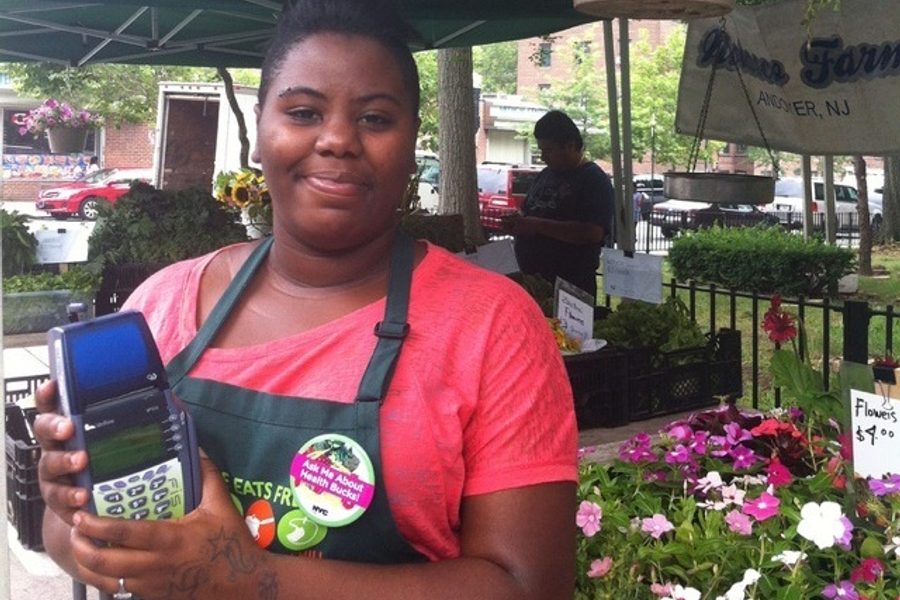Looking for Fraud in All the Wrong Places
Republicans say they’re slashing food stamps because of fraud. So why are they expanding a much more fraud-prone program?
Cole Stangler

Opponents of the federally funded food stamp program are increasingly using the specter of fraud to justify leaving millions of Americans without vital access to food for their families. Republican members of Congress — Senator John Thune (R-N.D.), House Agriculture Committee Chairman Frank Lucas (R-Okla.) and Rep. Martha Roby (R-Ala.) to name only a few—have all cited fraud as their reason for slashing funding to the Supplemental Nutrition Assistance Program (SNAP).
Some have linked the growth in SNAP participation, which almost doubled between 2008 and 2012, to higher incidences of fraud. At a hearing in March, Committee on Oversight and Government Reform Chair Darrell Issa (R-Calif.) — who, with a net worth of $355 million, was recently named the richest member of Congress — connected the increasing number of SNAP beneficiaries to “skyrocketing fraud and a dysfunctional enforcement system.” Never mind that the non-partisan Congressional Budget Office acknowledges that the weak economy is primarily to blame for why 1 in 7 Americans are now on food stamps.
The notion that tens of millions of people are regularly “trafficking” their food stamps — exchanging their benefits for cash — or improperly qualifying for the program, or using their benefits to load up on liquor and cigarettes, is amplified by the conservative media. Earlier this month, Fox News aired a documentary called “The Great Food Stamp Binge,” which followed a carefree San Diego surfer bum who supposedly lives comfortably off SNAP benefits alone — he was dubbed “the new face of food stamps.” Meanwhile, the Weekly Standard and Fox News hyped the release of statistics from the Department of Agriculture that showed 1.3 percent of SNAP beneficiaries are engaged in trafficking.
However, while food stamp fraud does occur, SNAP still has one of the lowest fraud rates among federal programs. Americans are far more likely to cheat on their taxes or commit auto insurance fraud than misuse their food stamps.
Nevertheless, when Congress returns to session in September, it will likely agree to cut some amount of SNAP funding, leaving thousands of American families in increased danger of going hungry. In its version of the farm bill, a massive spending bill that funds both agriculture and food policy, the Senate has already passed $4 billion in cuts to food stamp programs. Meanwhile, Republicans in the House passed a farm bill without any funding whatsoever for nutrition programs — the first time that’s happened since 1973 — and are now proposing $40 billion in cuts to SNAP. The Center on Budget and Policy Priorities estimates the House GOP’s latest food stamps plan could cut as many as 6 million people from the program.
Yet as Republican Congress members cry fraud to justify defunding SNAP, representatives on both sides of the aisle are expanding without question a different USDA-funded program — one that the Secretary of Agriculture and ranking members of the House Agriculture Committee have both acknowledged to suffer from a much higher incidence of fraud. The federal crop insurance program, which is intended to insure farmers’ crops against inclement weather and unexpected price fluctuations, would be expanded in both the House and Senate versions of the farm bill.
Crop insurance, in spite of its name, isn’t like the commercial insurance policies that most Americans are accustomed to. Though farmers buy different crop insurance policies from a range of private companies, all of those policies are heavily subsidized by the Department of Agriculture — and, in turn, by taxpayers. And while crop insurance has generally been subject to less scrutiny than food stamps, the program is actually far more vulnerable to fraud and abuse than SNAP, according to policy experts, government regulators and federal data.
Unlike the property or casualty insurance policies that most individuals purchase, taxpayers pay all of the administrative costs and about 60 percent of the different premium costs for crop insurance, according to an official with the Government Accountability Office, the investigative arm of Congress that audits and evaluates government programs. As federal auditors have pointed out, these large subsidies effectively shield producers from the higher premiums associated with filing frequent or large claims. In other words, there’s an incentive for frequent claims embedded into the very core of the program, leaving plenty of room for widespread abuse.
The last official figure calculated by the GAO estimated that the crop insurance program lost $117 million to “fraud, waste and abuse” in 2005, or about 4.3 percent of the program’s $2.7 billion cost that year. Crop insurance spending has since expanded to roughly $9 billion. Food stamp fraud, by contrast, accounts for about 1 percent of the program’s cost.
In March, federal investigators uncovered the largest detected crop insurance fraud ring in the country — a $100 million scheme involving insurance agents, claims adjusters, brokers and farmers in eastern North Carolina. “I can tell you it’s everywhere, all across the country,” Jimmy Thomas Sasser, a claims adjuster who was sentenced to four years in prison for his involvement, told the press.
And last month, the GAO reported another form of widespread crop-insurance fraud: payments going to dead people. The USDA likely paid out $22 million to dead farmers between 2008 and 2012, because, as the report found, the “RMA does not use [the Social Security Administration] master list of deceased individuals to verify whether its policyholders have died.”
Bruce Babcock, an economics professor and farm policy expert at Iowa State University, is blunt in his assessment of the program.
“It’s pretty clear that Congress protects the farmers,” Babcock says. “I’m not saying that Congress protects fraud. But the culture of the program is a social program to benefit farmers. It’s not a commercial insurance program.”
In addition to what some regard as crop insurance’s overarching structural deficiencies, federal watchdogs say that the agency charged with monitoring farmers hasn’t been doing its job. The Department of Agriculture’s Risk Management Agency (RMA) identifies farmers who take out claims that are higher or more frequent than others in the area and then notifies the farmers they’re going to be investigated. But the Farm Service Agency, which conducts the investigations for the RMA, fails to complete about a quarter of those inspections, according to a GAO report last year. The FSA doesn’t have any official procedures to ensure that the inspections actually take place — in the GAO report, some officials cited a lack of resources and a sense that their work will have no impact as reasons for not carrying out the investigations. This lack of oversight, the report found, increases “the likelihood that fraud, waste, or abuse occurred without detection.”
It isn’t hard to imagine the kind of public outcry that would result if the USDA’s Food and Nutrition Service, which works with states and the federal government to combat food stamp fraud, didn’t follow up on a quarter of the potential fraud cases to which it was alerted. Or, for instance, if people were found to be improperly receiving SNAP benefits by using dead people’s names.
But considering Congress’s current political environment, it’s unlikely that long-term measures to correct those oversights will be taken anytime soon.
“Even if payments go out in a somewhat fraudulent fashion or if the rules are bent a little bit, it’s still serving its purpose for sending out money from taxpayers to farmers,” says Babcock. “If the [RMA] were to try and run the crop insurance program like a commercial insurance program, it is clear that Congress would fire the head of the RMA and take them to task for onerous regulation and heavy-handed enforcement.”








